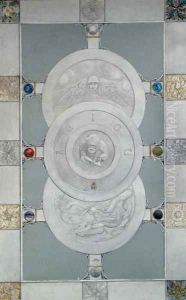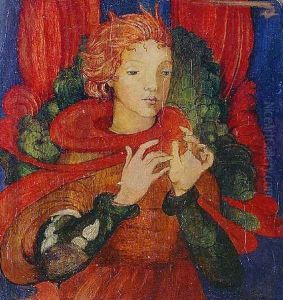Phoebe Ann Traquair Paintings
Phoebe Anna Traquair was a Scottish artist, known for her role in the Arts and Crafts movement. Born in Dublin, Ireland, in 1852, Traquair was a self-taught artist whose work spanned a variety of mediums including painting, embroidery, and enameling. Her artistic career began in earnest when she moved to Edinburgh after marrying Ramsay Traquair, a Scottish palaeontologist, in 1873.
Traquair's work was profoundly influenced by the Celtic Revival and the Pre-Raphaelite Brotherhood, movements that emphasized a return to craftsmanship and medieval styles. She became particularly renowned for her murals, which can still be seen in public buildings and churches throughout Scotland, such as the Song School at St Mary's Episcopal Cathedral in Edinburgh. Her murals often featured themes of love, beauty, and spirituality, characterized by their rich colors and intricate details.
Aside from murals, Traquair was also accomplished in the art of illuminated manuscripts, through which she expressed her deep interest in literature and poetry. These works were highly personalized, blending symbolic imagery with text in a manner reminiscent of medieval manuscripts.
In the realm of decorative arts, Traquair made significant contributions to the field of enameling, reviving the Renaissance technique of Limoges enamel to create jewelry and decorative panels. Her enamels are noted for their vibrant colors and intricate designs, showcasing her skill and creativity.
Traquair's legacy is that of a pioneering woman artist who broke through the constraints of her time to achieve professional recognition. Her contributions to the Arts and Crafts movement in Scotland were significant, and she left behind a body of work that continues to be celebrated for its beauty and craftsmanship. Phoebe Anna Traquair died in Edinburgh in 1936, leaving behind a legacy that continues to inspire artists and art lovers alike.











